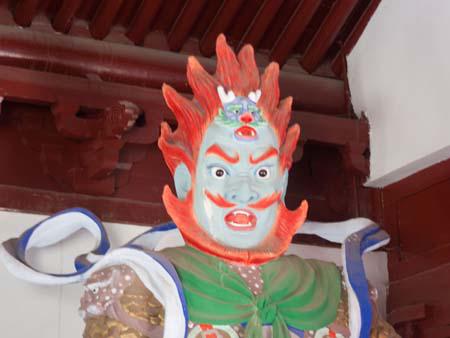Tian Chi, also known as Heavenly Lake, is located about 150km away from Urumqi in the Tian Shan mountain range and is a popular a day trip from the city. Regular buses leave at 9am from the People’s Park in Urumqi so on our first evening we purchased some tickets for 150 Yuan each for the following day. We thought, through conversing with the bus operator in his basic English (and my rudimentary Mandarin) the fee would cover the transport to Tian Chi as well as an entrance ticket to the Heavenly Lake.
thydzikgooglemap(http://sonyaandtravis.com/maps/urumqi-china-to-tian-chi-china.xml)
The following morning we arrived at the bus station to be hustled onto a bus with about ten or so local Chinese tourists. It turned out we’d somehow booked ourselves onto an actual day tour, conducted in Mandarin. We also found out that the 150 Yuan only covered transport to the Tian Chi complex and that we would need to fork out an additional 180 Yuan for the tour (totally about $50 each) which included a few other attractions, lunch and transport to the lake itself. Our outdated guidebook advised there was a 15 Yuan chairlift to the top of the mountains however we were informed this had been shut down. We caused quite a bit of commotion and amusement on our bus, being the only foreigners and also our adamant reluctance to pay the extra 180 Yuan to join the tour (after a few months of travel every penny counts!). Anyway, having no better option, in the end we joined the tour. Funnily enough, one of the highlights of the tour was one of the friendly Chinese tourists, Yu, she seemed to be the only person who spoke a bit of English and was helping us with some of the translation. The tour itself was quite a disappointment after having already visited Central Asia. The Tian Chi region is populated by local Kazakhs and as such the Kazakhstan culture was on show. There were a few yurts set up for tourists to take photos inside, a costume section where we could dress up in traditional wear, a Kazakh song and dance show, a traditional fighting event. Lunch was a merely a plate of plov which was disappointing. In general, the tour was rushed, the tour guides were super loud as each wore a speaker set trying to talk over one another and there were just so many tour groups. After travelling independently it was quite painful to be told “times up, next site”. It was, though, interesting to observe the local Chinese tourists enjoying their holidays. It is clear that a growing number of Chinese are enjoying higher levels of income and as such domestic tourism is booming.
Anyhow, the lovely blue lake itself is stunning, located over two thousand metres high in the mountains. A few yurts lie atop the hills, owned by Kazakhs. We had a pleasant chat to a local Kazakh man who told us that during peak season 20,000 Chinese tourists visit the site. We also visited a temple as part of the tour, which we found out, was built only last year.
In the spirit of organised tours, our last stop was a massive three-level handicraft shop selling everything from jade to perfumes.
thydzikgooglemap(http://sonyaandtravis.com/maps/urumqi-china-tian-chi.xml,s)















































































































